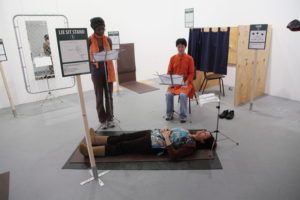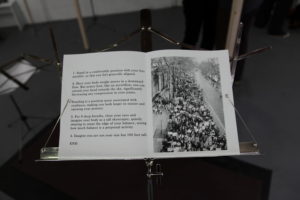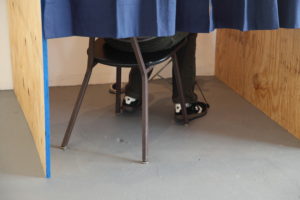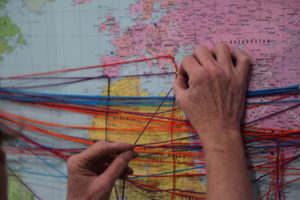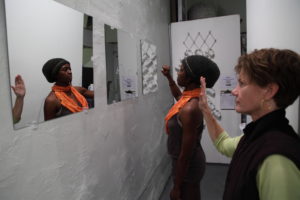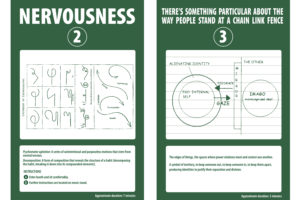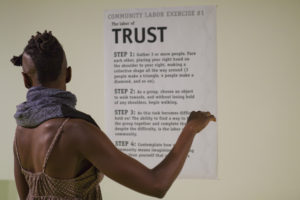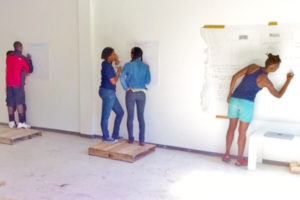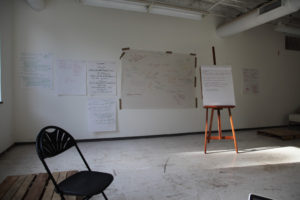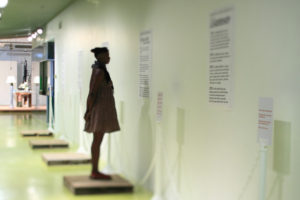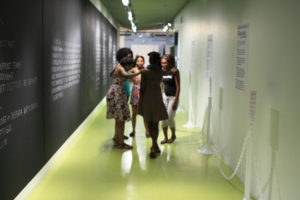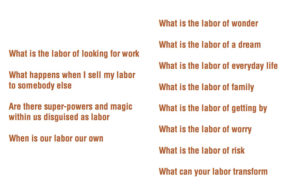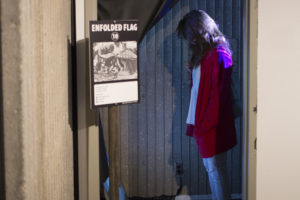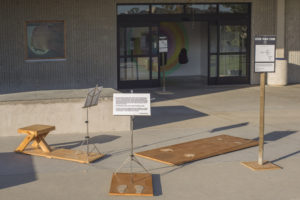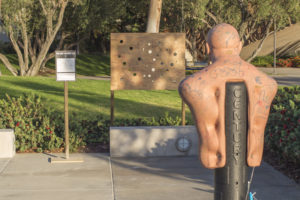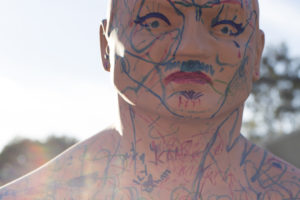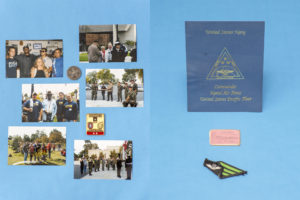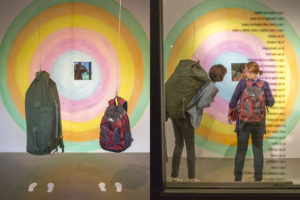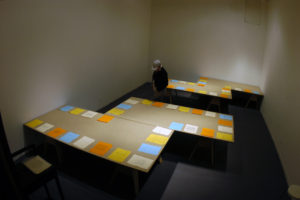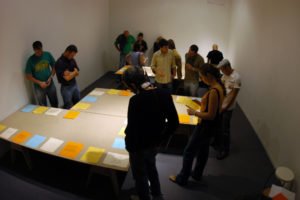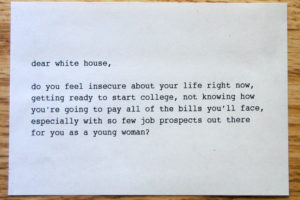(2004 – present)
Collaborative project
Collaborator: Ashley Hunt
On Movement, Thought and Politics is a collaboration with Ashley Hunt born from our attempts to merge and challenge our respective disciplines: dance, visual art, activism and teaching. We look at what these disciplines and daily, political life demand of the body and mind, exploring how those disciplines shape communities and the theories and possibilities that each offers. The works that make up On Movement, Thought and Politics sit uncomfortably between dance, visual art, activism and teaching, belonging faithfully to none while pushing against the boundaries that separate them from one another. The collaboration was animated by an interest in the body as a site of knowledge, of new capacities and emerging agencies. It consists of the following projects:
[BLACKOUT]
2014
Installation
Site: Threewalls, Chicago, IL
[BLACKOUT] was a sensory installation with video and sound built upon the Par Course projects. In it, a darkened room was set up to mimic a black box theater stage with its lights off. Black felt was hanging as wings and stage curtains, which the viewer was able to explore by touch and feeling as their eyes and ears adjusted to the sensory deprivation. In doing so, they would eventually tune in to a quiet sound score alternating between the murmur of an audience awaiting a show to begin and people moving through the streets.
Par Course A, B and C
2010-13
Installation
Par Course A, B and C were choreographic sculptures and installations organized as “par course” outdoor exercise trails. These works required active engagement with the viewer and were developed in dialogue with specific communities. Workshops allowed us to generate source material for each iteration as well as consider new methods of and possibilities for embodiment and collaboration.
Par Course A
2010
“Instruments of Risk,” curated by Asher Hartman and Carol McDowell, Sea and Space Explorations, Los Angeles, CA
Par Course A positioned the viewer as the performer who “completes” a series of artworks, all of which are set up sequentially as an exercise circuit and “par course.” Following previous iterations of a workshop held on movement, thought and politics, developed originally during a residency at BAK in Utrecht, Netherlands, the form of the par course became a way to offer the workshop without the artists being present.
Par Course B
2012
Hyde Park Art Center, Chicago, IL
Collaborators: members of Hyde Park Art Center’s Youth Art Board
Through workshops and dialogue, Par Course B engaged its participants by asking “What is the labor of community?”
Par Course C
2013
“Within,” curated by Chloë Flores, Cypress College Art Gallery, Cypress, CA
Collaborators: members of Cypress College’s Veterans’ Resource Center
Par Course C was developed based on participants’ recollections of the physical and mental training that transform someone from individual citizen to soldier.
On Movement, Thought and Politics: Garment Worker Center, Los Angeles
2009
Video and installation
Collaborators: members of the Los Angeles-based Garment Worker Center
In On Movement, Thought and Politics: Garment Worker Center, Los Angeles, scores for three tableau vivants were created with the education materials used by the Center to teach workers how to make demands for their rights. In each iteration, two participants volunteered to direct, shaping their fellow workers into the postures and gestures that they understood the posters to suggest.
Undeliverable Address: 54 Questions that will not be answered by the White House
2005
Installation and booklet
Crazy Space Gallery, Santa Monica, California
At the height of the Bush administration and its “War on Terror,” whitehouse.gov offered to answer questions asked by the public, on a page titled “Ask the White House.” At a time of mass dissent against the Administration, the questions presented were “softballs,” effectively asking the Administration why they were so great, with pat answers credited to the President and members of his Cabinet. Seeing this invitation into public speech as a simultaneous invisible erasure of critical questions, Hunt and I invited artists and activists we knew to write their own questions. Contributors were asked to consider how people were living their lives: What were their concerns as artists, producers, parents, educators, citizens, children, workers, organizers, activists, etc? What were they thinking, making and doing? How were they getting by, financially, emotionally or otherwise, within that particular moment? We were also interested in the kinds of language used to express such matters, specifically whether the ways we are accustomed to describing our lives really do express what we hope them to. And if they do, is such language compatible with political expression, allowing what we mean to say to enter into the decisions and processes which determine how we live?
Each contributor was asked to consider these thoughts in the formulation of their question, which could range from conventionally political speech to speech that tries to escape limitations they feel conventional political speech to contain. They were asked to submit their question to “Ask the White House,” and then — seeing them unanswered — to forward them to the us, where Undeliverable Address would serve as a forum for these unsanswerable questions.
